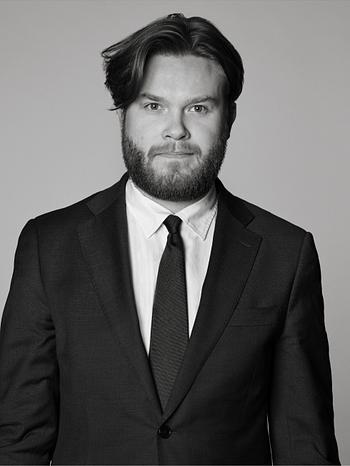Bruno Liljefors
Black grouses in autumn
Signed Bruno Liljefors. Canvas 70 x 100 cm.
More information
The appreciation of Bruno Liljefors' innovative animal paintings extended beyond the borders of Sweden. His work is characterized by a clear interest in dramatic situations, the struggle for existence that Darwin brought to life.
In 1882 he completed his academic studies in Sweden and traveled across Denmark to Düsseldorf, where he visited the animal painter C.F. Deiker. On his way back home he visited the artists' colony in Grez-sur-Loing. Like the majority of his generation in Grez, Liljefors shared the ideas of the opposition movement that would lead to the formation of the Artists' Association in 1886. Between 1888-89 he taught at the Valand Art School in Gothenburg.
In this 1914 painting, Bruno Liljefors lets nature interact with the grouse to create a dynamic and exciting composition. He also enhances the depth of the image by adding the flying grouse placed further back in the picture space.
Artist
Bruno Liljefors is the Swedish artist best known for his nature and animal motifs, especially in dramatic situations. Liljefors started with studies at the Academy of Arts in 1879, and continued 1882 in Düsseldorf where the studies revolved around animal painting. The journey then continued to Venice, Rome, Naples, Paris and Grez. Once back in Sweden, he began to draw and paint animals, especially cats and small birds, from the beginning in intimate interaction with nature. He then moved on to broader depictions of wild animals and nature, of seascapes with seabirds and of dramatic scenes of battles between birds. Liljefors is known as our country's foremost animal painter with a large production. Liljefors depicted, in contrast to the "idyllic" animal painting, the animals everyday life with a focus on movement, anatomy and their adaptation to the landscape. This is where the greatness of his painting lies, in the ability to show the animals in their proper environment. He has achieved this by hunting and observing. Well-known works of art are the paintings "Rävfamilj" (1886) and "Havsörnar" (1897), as well as the sculpture "Lek" (1930) at Stockholm Stadium. Liljefors is mainly represented at the National Museum, Waldemarsudde and the Thielska gallery in Stockholm.
Read more



























